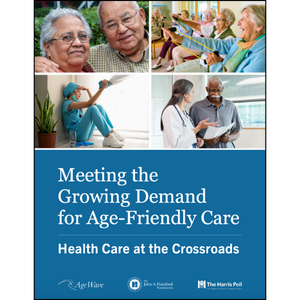States must beef up LTSS for boomers
States must step up efforts for seniors and adults with disabilities, according to AARP’s new state scorecard report.
The report, “Picking Up the Pace of Change: A State Scorecard on Long-Term Services and Supports for Older Adults, People with Physical Disabilities and Family Caregivers,” shows that while most states have made some progress, it’s not fast enough for those needing long-term services and supports (LTSS), which helps arrange home and community services so seniors can stay in their homes. The scorecard is especially timely as Republican proposed healthcare legislation calls for Medicaid cuts and funding change from open-ended entitlement to a fixed amount.
“This scorecard sounds the alarm, but it also provides a range of tools states can use to spark new solutions and create systems that are aligned with the new realities of aging and living with a disability,” said Susan Reinhard, RN, PhD, senior vice president and director of the AARP Public Policy Institute, in a press release. “The proposed cuts to Medicaid—the largest public payer of long-term assistance—would result in millions of older adults and people with disabilities losing lifesaving supports.”
Nationwide, the average amount states spent on their share of Medicaid spending for long-term care directed toward home- and community-based services increased from 39 percent in 2011 to 41 in 2014, the latest data year available. There was a wide range of spending among states, however. The top-ranked state, Minnesota, spent about 69 percent and the lowest-ranked state, Alabama, spent about 14 percent.
Only nine states and the District of Columbia spent more on home and community-based services than on nursing home care. Those services included home health care, caregiver training and adult day care. Reinhard told Kaiser Health News many states have struggled to expand home-and community-based options for Medicaid enrollees needing long-term care because that is an optional benefit. Nursing homes are mandatory under federal law.
States are scored based on their performance in 25 indicators, including Medicaid spending, nursing home costs, home health aide supply, antipsychotic medication use among nursing home residents, long nursing home stays, employment rate of people with disabilities and support of working caregivers.
The Scorecard was funded by the AARP Foundation, The Commonwealth Fund and The SCAN Foundation. This is the third edition of the scorecard. View the full report at www.longtermscorecard.org.

Nicole was Senior Editor at I Advance Senior Care and Long Term Living Magazine 2015-2017. She has a Journalism degree from Kent State University and is finalizing a master’s degree in Information Architecture and Management. She has extensive studies in the digital user experience and in branding online media. She has worked as an editor and writer for various B2B publications, including Business Finance.
Related Articles
Topics: Clinical











